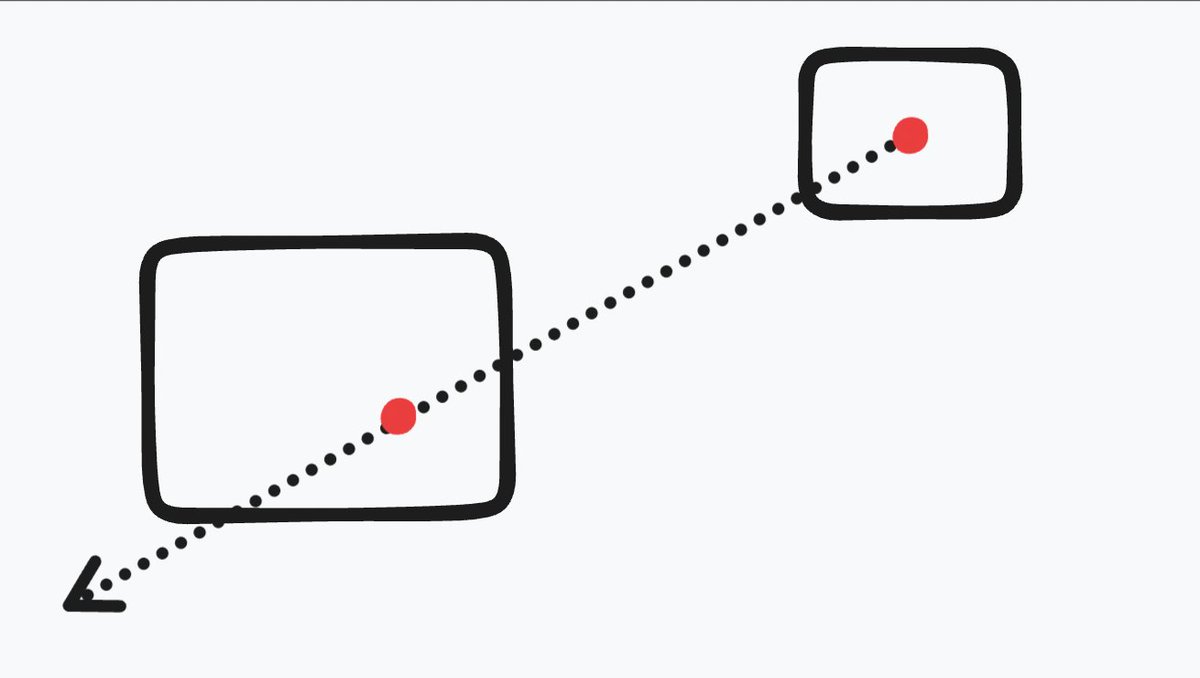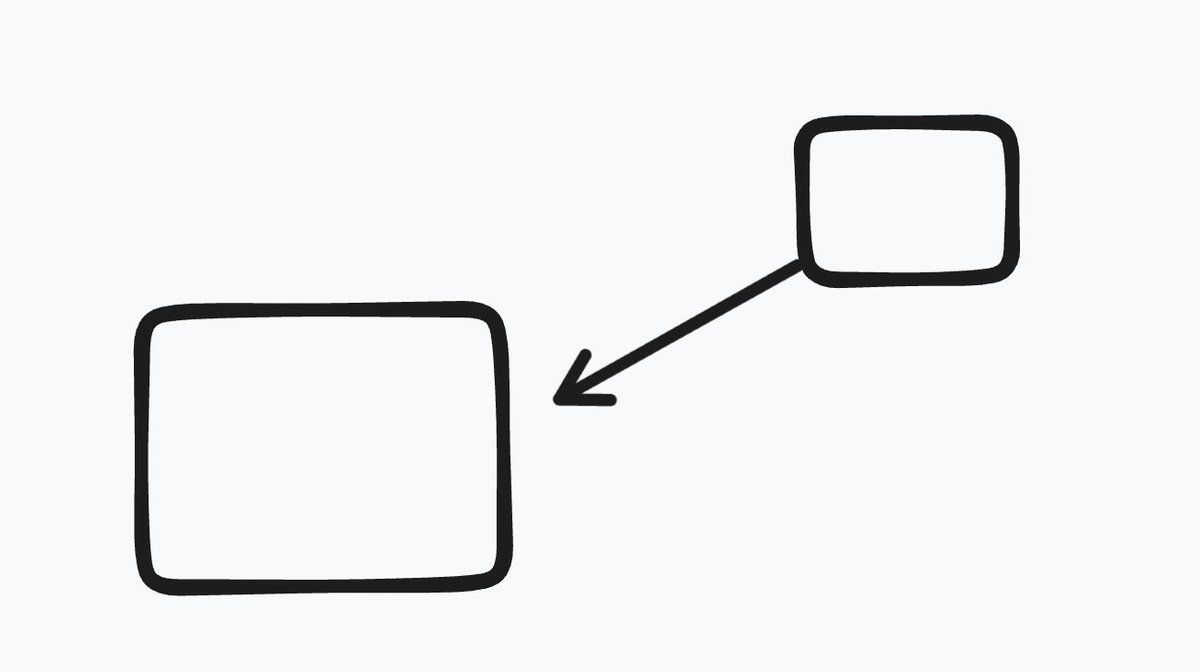I think I got it, omg
Compare to current behavior:
When we have an arrow between shapes, that arrow has a start and end point (actual location is based on a normalized "anchor" from when the arrow was last modified, long story) 

We expect to have have one intersection from the start shape, and two intersections in the end shape. We pick the intersection closer to the start point. 

If the arrow has a decoration (ie an arrowhead) then we move the point back toward the other point by some distance. 

To my great shame and frustration, this routine only works if certain conditions are met. Did you catch them?
Doesn't look very good, in part because the arrow is no longer pointing "towards" its anchor, but through it. 

There's some more to deciding when to change strategies (arrow too short? contain or collide?) but that's the main approach.
Still some work to do 🤔
🔗 test branch: tldraw-a2msnibzj-tldraw.vercel.app
• • •
Missing some Tweet in this thread? You can try to
force a refresh












